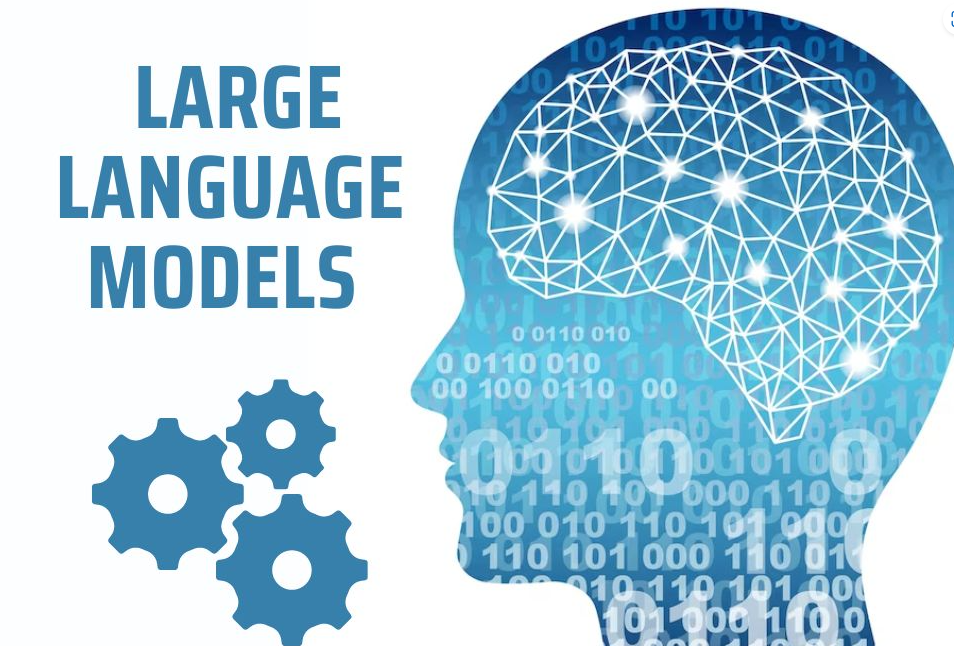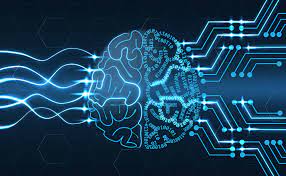A machine learning model that aims to predict and generate plausible language is called the Language model. Large language models like GPT3.5 are the foremost innovation of artificial intelligence. With their huge neural networks, they can understand and generate human-like text. It impacts education, healthcare, entertainment and beyond, an insightful, transformative and promising future where the interaction of human-computer is more innate. This article gives you brief information about the Large Language model.
What are Large Language Models (LLMs)?

A deep learning algorithm that can perform a variety of Natural Language Processing (NLP) tasks is called the Large Language Model. They use transformer models and training takes place by using massive datasets. So, they are large and enable them to recognize, translate, predict/generate text or other content.
Large Language Models refer as Neural Networks(NNs), these neural networks work by using a layered network of nodes like neurons. Not only teaching human language to Artificial Intelligence(AI) applications but also training to perform many tasks like writing software code, understanding the structure of protein, and more.Similar to that of the human brain LLMs should be pre-trained and then fine-tuned which makes it possible to solve question answering, document summarization, text classification and text generation problems.
The capability and the size of language models exploded over the last few years as the memory of computers, the size of the dataset and the increase in processing power. Popular Large Language Model examples are PaLM(Pathways Language Model), BERT(Bidirectional Encoder Representations from Transformers), XLNet and GPT(Generative Pre-trained Transformer).
Key components:
Large Language Models made up of multiple neural network layers:
- Recurrent layer
- Feedforward layer
- Embedding layer
- Attention layer
The recurrent layer understands the words of input text and it captures the relationship among the words in a sentence. The feedforward layer made of fully connected multiple layers which transform the input embeddings. The embedding layer makes embeddings from the input text. Most accurate outputs generate with the attention layer.
Training process:
Large Language Models training process involves several steps:
1. Text Pre-processing:
LLMs can effectively process when the textual data transforms into numerical representation.This conversion involves techniques like encoding,tokenization and creating input sequences.
2.Random Parameter Initialization:
Before the training process begins LLMs parameters are initialized.
3.Input Numerical Data:
For processing,the text data’s numerical representation fed into the model.Based on transformers, the model’s architecture allows it to capture the relationships between the words in the text.
4.Loss Function Calculation:
The difference between the next word or token in the sentence or LLMs prediction is measured.The aim of LLMs is to minimize this loss during training.
5.Parameter Optimization:
The parameters of LLMs adjust by using Optimization techniques like gradient descent.This involves updating the parameters and calculating gradients accordingly and gradually improving the performance.
6.Iterative training:
On the given task or data set,until the LLMs outputs achieve a satisfactory level of accuracy the training process repeats over multiple epochs or iterations.
By following the above training process,Large Language Models learn to capture the lingual patterns,understanding the context , generating coherent responses and enabling them to excel at different language related tasks.
How do Large Language Models work?
To generate outputs, LLMs leverage deep neural networks based on patterns that are learned from the training data and transformer architecture. They work by receiving input, encoding, and then decoding to produce output. To fulfill general functions and fine-tuning it requires training that enables one to perform required tasks.
Training:
By using large textual datasets Large Language Models are pre-trained from sites like GitHub, Wikipedia, and others. These datasets contain trillions of words, their quality affects the LLMs performance. In this stage, it engages in unsupervised learning, which means without specific instructions it processes the datasets.LLMs AI algorithm can learn the relationship between the words and the meaning of the words during this process. It also learns to differentiate words based on the content.
Fine-tuning:
To perform a specific task like translation, it should be fine-tuned because it optimizes the performance of the particular task.
Prompt-tuning:
Prompt means an instruction given to an LLM. This type of tuning is similar to that of fine-tuning. Through few-shot prompting or zero-shot prompting it trains a model to perform a specific task.
Uses:
Large Language Models are useful for several purposes:
- Informative Retrieval: Whenever we use search engines like Google or Bing, we depend on a large language model to produce information according to the query.
- Text Generation: LLMs are behind generative AI like ChatGPT and generate text based on inputs.
- Code Generation: LLMs understand patterns that enable them to generate code. Code generation is also an application of generative AI.
- Sentiment Analysis: LLMs enable the companies to analyze the textual data sentiment.
- Conversational AI and Chatbots: To engage with customers and explain the meaning of their queries, LLMs enable customer conversational AI or chatbots.
Future of Large Language Models:
The future of LLMs is to be transformative, Chat GPT arrival brought LLMs to the fore. As LLMs continue to evolve and will become more proficient in understanding and generating human-like text, revolutionizing industries such as education, content creation and health care. It is clear that LLMs are going to develop the ability to replace workers in a few fields and it also can enhance productivity and process efficiency.
Henry Harvin is one of the best online Natural Language Processing Course providers.
Henry Harvin:
Rating:4.8/5

Key features:
- Trending Certification.
- 100% Practical training.
- Comprehensive curriculum.
- Job support and Alumni status.
- 100% money back guarantee ( After your first session if you don’t like,money is returned).
- Can attend unlimited sessions with multiple trainers.
Benefits:
- 9 in 1 course which includes Training, Projects, Internship, Certification, Placement, E-learning access, Masterclass, Hackathons, Membership.
- Trainers with 18+ years experience.
- Free masterclass sessions.
- Guaranteed internship.
- During training they provide experience industry projects.
Course duration and fees:
The course duration is around 16 hours and the total program fee is Rs.12,500.
Check this video :
Conclusion:
I hope this article explains you clearly about Large Language Models, its uses, key components, training process, working and future. In the era of advancement in the technology, LLMs like GPT-3.5 truly shaped the digital landscape because their understanding of human language and innovation of context propela across the industries and new era of natural language processing.
Recommended Reads:
ChatGPT: Is it the start of the AI revolution? (henryharvin.com)
FAQs:
Q.1:What is a Large Language Model?
Ans:A deep learning algorithm that performs a variety of Natural Language Processing(NLP) tasks.
Q.2:Mention a few examples of Large Language Models?
Ans:PaLM(Pathways Language Model),BERT(Bidirectional Encoder Representations from Transformers),XLNet,GPT(Generative Pre-trained Transformer) are the few examples.
Q.3:What is ChatGPT?
Ans:A chatGPT is a large language model-based chatbot, developed by OpenAI.
Q.4:What is Natural Language Processing?
Ans:It is the technology used by machines to understand, analyze, manipulate, interpret the language of humans and a part of Computer Science, Human Language and Artificial Intelligence.
Q.5:What are the neural network layers of LLMs?
Ans: The multiple neural network layers are:
1.Recurrent layer
2.Feedforward layer
3.Embedding layer
4.Attention layer
Q.6:What are the types of GPT?
Ans: There are different types of GPT:
- Artificial Intelligence (AI)
- Machine Learning (ML)
- Natural Language Processing (NLP)
- Robotic Process Automation (RPA)
Q.7:What are the types of GPT models?
Ans:The different types of GPT models are:
- GPT-1
- GPT-2
- GPT-3
- GPT-4











